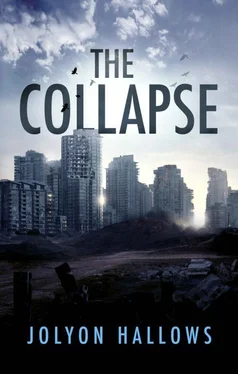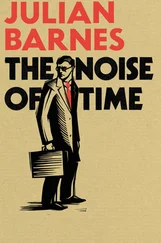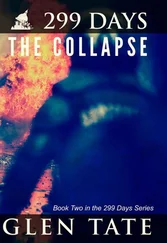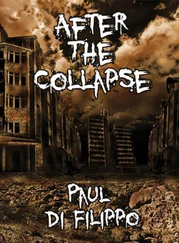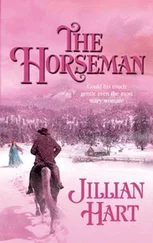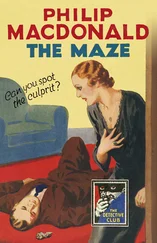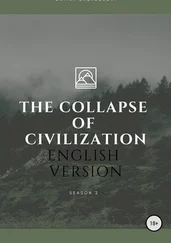In the background, houses stood, but yards were being overrun with weeds and uncut grass. “Today, no more than about a hundred people remain. With no local industry to provide a payroll, the rest moved away. We’ve been to half a dozen towns and small cities across the country, and this scene is becoming more and more familiar. Towns abandoned, factories closed. It’s a trend nobody seems able, or willing, to stop.”
He paused to look around at the desolation before he turned back to the camera, his face drawn. “Armand Crisp reporting from Forrest, Manitoba.”
Darius, Gus, and two other resistance fighters stood on the edge of a canyon. A hundred yards upstream, a steel trestle carried the railroad over the river. The supports were steel beams embedded in concrete bases planted deep into the canyon floor five hundred feet below. Twin arches rose from the base of the supports on one side of the canyon, swooped upward to meet the right-of-way, and plunged back down to join the supports on the other side.
One of the fighters, who had been a structural engineer before the collapse, said, “There are two ways to bring down this bridge: blow up one of the four supports or destroy the arch. But as you can see, there is no way to hide the amount of explosives we’d need.”
Darius said, “What about smaller explosives to weaken both supports. Would that work?”
“No. We’ve watched the Peak surveyors scour the bridge before the train crosses it. They’d find anything bigger than a pebble. And they’d probably find that.”
“Could we drill cavities into the concrete to hold explosives and seal the holes?”
“We’ve thought of that, but we haven’t been able to figure out a way that doesn’t leave a scar on the concrete. Besides, even if we could hide the explosives, sniffer dogs would find them.”
Darius moved closer to the cliff edge, craning his neck to get a better view of the bridge supports when the ground began to crumble under him, sending rocks crashing down the cliff face as he scrambled back to safety.
“Careful,” Gus admonished. Darius’s face was creased in thought. “You have an idea?”
Darius looked over the canyon edge and studied the forest encroaching onto the cliff. “Maybe.” He gestured toward the bush. “Where is the right-of-way at this point?”
“About a hundred yards in. Why?”
“Show me.”
They pushed their way through the thick underbrush, coming to the cut where the rail lines ran through the forest. Darius looked up and down the tracks and back toward the cliff. “What kinds of resources do we have?”
“What do you have in mind?”
_____
THE PACIFICATION TRAIN charged along at the maximum speed the rails would allow. Peak Command would not accept its senior people creeping in fear. Speed implied boldness. Boldness implied force. Force was what the train and its occupants were there to exert. Surveyors went ahead of the train to scan the tracks and the bridge for signs of sabotage and to flag irregularities so the engineer could slow. Now, the route clear, the train, a locomotive pulling six cars, thundered along. Four of the cars were for the Peaks, twenty to a car, one was for a dozen Peak senior officers, and one carried supplies, weapons, and food.
To most of the Peaks, duty on this train was a mixed blessing. Alcohol was banned, as were women. There was no recreation and since few of the Peaks were readers, that meant nothing to do but sit, be jostled by the rattling railcars, and snooze. On the other hand, the Peaks who were assigned to this train were considered among the best. The assignment was a precursor to promotion. So the Peaks who were selected got onto the train, resigned themselves to boredom in between pacification raids and their illicit rewards, and snoozed.
In the command car, Peak officers shared glasses of brandy and received briefings on the towns they would invade, the town officials they would intimidate or bribe, the women they would invite back to the railcar. Those who resisted would be made available to the men.
The train left the depot in the evening, timed to arrive at the first town in the early morning. Now, it was night, the moonlight illuminating the forest. The locomotive engineer yawned. It was a struggle to keep awake, particularly when the only visible world was trees, a track, and a beam of light. The train jostled, a shaky one. The engineer blinked the sleep from his eyes and studied the terrain. Nothing seemed unusual. He cursed the surveyors. They should have caught that one. No doubt some damn Peak boss would ream him out for spilling his drink.
The train emerged from the forest onto the bridge. But the beam of light vanished into the night. There was nothing in front of it. No rails, no ties. Just air. To his left, about a hundred yards up the canyon rim, the engineer glanced the outline of the bridge. He screamed and hit the brakes, but it was too late. The wheels of the train squealed in protest. The train, carried by its momentum, slowed, but not before the locomotive and the command car plummeted over the cliff. The rest of the train followed. On the bridge, Peak guards stared at the train crashing down the cliff face, smashing onto the rocks, tearing apart, spewing debris and mangled bodies into the rushing river below.
It would be a week before Peak officers finished checking the area. They found a set of tracks connected to the main line. A resistance team had laid down tracks leading to the cliff face. Then, in the brief time between the passage of the survey crews and the train, they had connected the tracks to the main line. To camouflage their work, they had ripped up a section of the main line and covered it with a jumble of trees and bushes.
It would be a month before the Peaks decided it would be too difficult and too expensive to retrieve the bodies from the train. Time and weather would take care of the remains.
But it took just a day for the Peaks to attack suspected resistance targets, to raid their homes, and to torture those they captured into giving the names of sympathizers. Darius, who knew firsthand what attacking the Peaks meant, had moved Ilona and Helena to a house the resistance used to hide its members who became vulnerable. It was supposed to be secret, but one of the people the Peaks captured was a man who hated the natives and who hated Ilona. His information didn’t save his life, but it revealed the location of the hideout.
The attack was sudden, brief, and brutal. Six men, their faces obscured by visors, their boots shiny black, their weapons polished and primed, burst through the front door. Before either Darius or Ilona could react, the men seized them and pinned them down while one of them pulled out hypodermic needles. Four-year-old Helena was the first to be injected, the first to slump into unconsciousness. Darius understood. The Peaks would not drug them if their destination was an interrogation centre. They were about to join the Vanished.
34
Report on Survival Operations
Food – Ross Candale
THE AREA AROUND Wishbone is full of game. Deer, moose, elk. Also, there are fish, mostly trout although there is an annual salmon run. There are two rivers that meet at the town. Incidentally, that’s why it’s called Wishbone. The rivers form a Y.
I’ve researched hunting techniques. I recommend archery. We can get some high-quality equipment now, and I’ve attached a couple of articles on making bows and arrows from saplings and using the gut of animals for a bowstring. I also recommend getting some rifles and ammunition just in case, but I suspect we may want to hold these in reserve for defence.
Читать дальше
